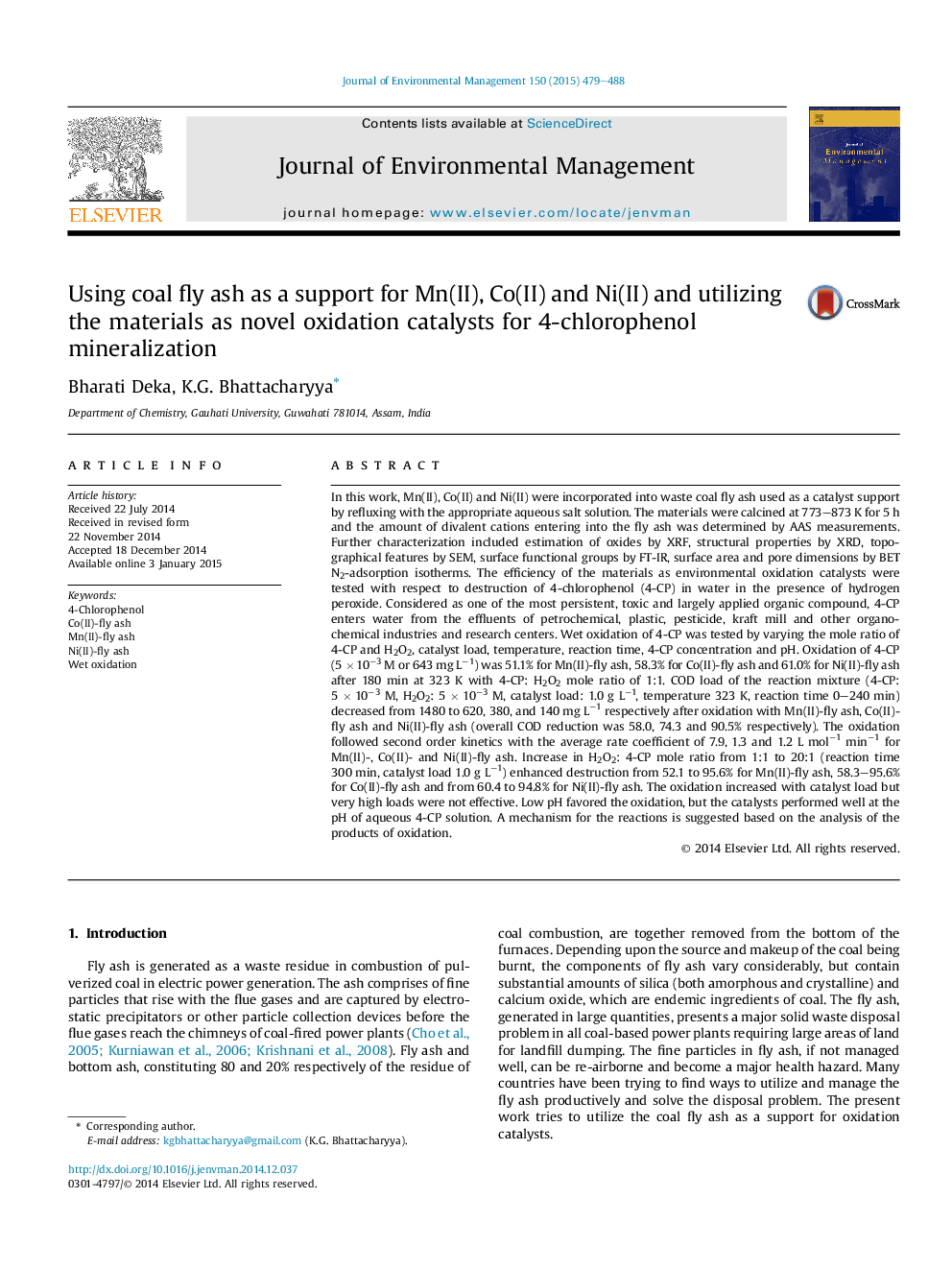| Article ID | Journal | Published Year | Pages | File Type |
|---|---|---|---|---|
| 7483051 | Journal of Environmental Management | 2015 | 10 Pages |
Abstract
In this work, Mn(II), Co(II) and Ni(II) were incorporated into waste coal fly ash used as a catalyst support by refluxing with the appropriate aqueous salt solution. The materials were calcined at 773-873 K for 5 h and the amount of divalent cations entering into the fly ash was determined by AAS measurements. Further characterization included estimation of oxides by XRF, structural properties by XRD, topographical features by SEM, surface functional groups by FT-IR, surface area and pore dimensions by BET N2-adsorption isotherms. The efficiency of the materials as environmental oxidation catalysts were tested with respect to destruction of 4-chlorophenol (4-CP) in water in the presence of hydrogen peroxide. Considered as one of the most persistent, toxic and largely applied organic compound, 4-CP enters water from the effluents of petrochemical, plastic, pesticide, kraft mill and other organochemical industries and research centers. Wet oxidation of 4-CP was tested by varying the mole ratio of 4-CP and H2O2, catalyst load, temperature, reaction time, 4-CP concentration and pH. Oxidation of 4-CP (5 Ã 10â3 M or 643 mg Lâ1) was 51.1% for Mn(II)-fly ash, 58.3% for Co(II)-fly ash and 61.0% for Ni(II)-fly ash after 180 min at 323 K with 4-CP: H2O2 mole ratio of 1:1. COD load of the reaction mixture (4-CP: 5 Ã 10â3 M, H2O2: 5 Ã 10â3 M, catalyst load: 1.0 g Lâ1, temperature 323 K, reaction time 0-240 min) decreased from 1480 to 620, 380, and 140 mg Lâ1 respectively after oxidation with Mn(II)-fly ash, Co(II)-fly ash and Ni(II)-fly ash (overall COD reduction was 58.0, 74.3 and 90.5% respectively). The oxidation followed second order kinetics with the average rate coefficient of 7.9, 1.3 and 1.2 L molâ1 minâ1 for Mn(II)-, Co(II)- and Ni(II)-fly ash. Increase in H2O2: 4-CP mole ratio from 1:1 to 20:1 (reaction time 300 min, catalyst load 1.0 g Lâ1) enhanced destruction from 52.1 to 95.6% for Mn(II)-fly ash, 58.3-95.6% for Co(II)-fly ash and from 60.4 to 94.8% for Ni(II)-fly ash. The oxidation increased with catalyst load but very high loads were not effective. Low pH favored the oxidation, but the catalysts performed well at the pH of aqueous 4-CP solution. A mechanism for the reactions is suggested based on the analysis of the products of oxidation.
Keywords
Related Topics
Physical Sciences and Engineering
Energy
Renewable Energy, Sustainability and the Environment
Authors
Bharati Deka, K.G. Bhattacharyya,
